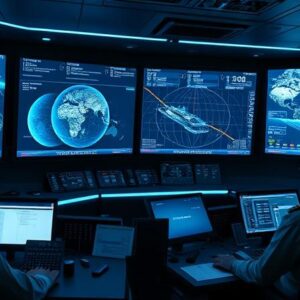The Global Naval Operations Updates provide timely insights into naval operations, technological advancements, fleet modernization, and strategic deployments worldwide.
In 2025, navies are balancing cutting-edge technology, humanitarian missions, multinational exercises, and cybersecurity initiatives to maintain maritime security and readiness.
This article examines the latest developments in global naval operations updates, providing a comprehensive overview for enthusiasts and professionals alike.
1. Fleet Modernization and Expansion
Fleet modernization remains a primary focus. According to Global Naval Operations Updates, navies are commissioning new destroyers, frigates, aircraft carriers, and amphibious vessels equipped with advanced systems.
Enhancements include AI-assisted navigation, radar and sonar improvements, integrated missile defense, and cyber-enabled operational platforms. Upgrading older vessels ensures readiness while adopting next-generation technologies for strategic advantage.
2. Technological Advancements Driving Naval Strategy
Technology is redefining naval operations. Global Naval Operations Updates reports widespread deployment of AI platforms, autonomous surface vessels (USVs), and unmanned underwater vehicles (UUVs).
AI supports real-time decision-making, predictive maintenance, and operational planning. Autonomous systems extend operational reach, reduce personnel risk, and enhance reconnaissance, surveillance, and combat effectiveness.
3. Multinational Exercises and Strategic Partnerships
Collaboration with allied navies is crucial. Global Naval Operations Updates highlights joint exercises across the Indo-Pacific, Atlantic, and Mediterranean, focusing on anti-submarine warfare, disaster relief, and cyber defense.
Exercises such as “Ocean Sentinel” and “Blue Horizon” enhance interoperability, strengthen alliances, and allow testing of advanced tactics and technologies under realistic operational scenarios.
4. Strategic Focus on the Indo-Pacific
The Indo-Pacific remains a key strategic region. According to Global Naval Operations Updates, navies from the U.S., Japan, India, and Australia conduct patrols, freedom-of-navigation operations, and joint drills.
These operations uphold international maritime law, reinforce regional stability, and deter potential threats, ensuring security in one of the world’s most geopolitically significant areas.
5. Cybersecurity and Digital Defense
Cybersecurity is a growing priority for modern navies. Global Naval Operations Updates reports the establishment of specialized cyber commands, AI-powered threat detection, and quantum-secured communications to protect ships, networks, and satellite systems.
Regular cyber exercises ensure readiness against hacking, espionage, and digital sabotage, demonstrating the increasing role of cyber defense in global naval strategy.
6. Environmental Sustainability Initiatives
Sustainability is becoming integral to naval operations. Global Naval Operations Updates highlights hybrid propulsion systems, biofuel adoption, and renewable energy integration at naval bases and ports.
Green initiatives reduce carbon emissions, improve efficiency, and demonstrate that maritime power can coexist with environmental responsibility, ensuring long-term operational sustainability.
7. Humanitarian Missions and Disaster Response
Navies often serve as rapid responders in crises. Global Naval Operations Updates emphasizes humanitarian deployments providing medical aid, food, and evacuation support during natural disasters.
Amphibious ships and aircraft carriers act as floating hospitals, enabling rapid relief efforts in remote areas. These missions strengthen alliances and enhance the global reputation of naval forces.
8. Submarine and Undersea Capabilities
Undersea operations remain crucial for maritime dominance. According to Global Naval Operations Updates, stealth submarines and unmanned underwater vehicles (UUVs) are deployed for reconnaissance, mine detection, and strategic surveillance.
These assets improve situational awareness, provide covert operational advantages, and bolster defense capabilities in critical maritime regions.
9. Naval Aviation and Air Power
Naval aviation is essential for modern maritime operations. Global Naval Operations Updates reports upgrades to carrier-based aircraft and drones, enhancing stealth, operational range, and precision strike capabilities.
Integration of manned and unmanned aviation ensures rapid intelligence gathering, surveillance, and combat readiness, maintaining decisive air-sea power.
10. Leadership, Training, and Personnel Development
Personnel are the backbone of naval effectiveness. Global Naval Operations Updates highlights training programs in AI, cybersecurity, and multinational coordination. Leadership development emphasizes adaptability, critical thinking, and cross-cultural competence.
Diversity and inclusion initiatives provide equal opportunities for women and underrepresented groups, fostering cohesive and effective naval forces capable of addressing modern challenges.
11. Geopolitical Importance of Naval Deployments
Naval operations influence global security and diplomacy. Global Naval Operations Updates reports that fleet movements, joint exercises, and humanitarian missions strengthen alliances, deter conflicts, and secure trade routes.
Freedom-of-navigation operations in contested waters uphold international law and regional stability, highlighting the strategic and diplomatic significance of naval power worldwide.
12. Future Outlook for Naval Operations
Looking ahead, Global Naval Operations Updates suggests a future defined by AI, autonomous systems, cyber defense, sustainability, and multinational collaboration.
Future navies will be multi-dimensional, capable of responding to diverse threats, providing humanitarian aid, and adapting to evolving maritime and geopolitical landscapes to maintain global readiness and influence.
FAQs About Global Naval Operations Updates
Q1: What are the main focuses of Global Naval Operations Updates?
Fleet modernization, technological innovation, cyber defense, environmental sustainability, and multinational collaboration.
Q2: Which regions are strategically important?
The Indo-Pacific, Mediterranean, and North Atlantic are key operational theaters.
Q3: How is technology impacting naval operations?
AI, autonomous vessels, drones, radar/sonar upgrades, and cybersecurity systems enhance operational efficiency.
Q4: Do navies conduct humanitarian missions?
Yes, they provide disaster relief, medical aid, and humanitarian support globally.
Q5: How is diversity incorporated in modern navies?
Inclusion programs provide opportunities for women and underrepresented groups, enhancing cohesion and operational effectiveness.






